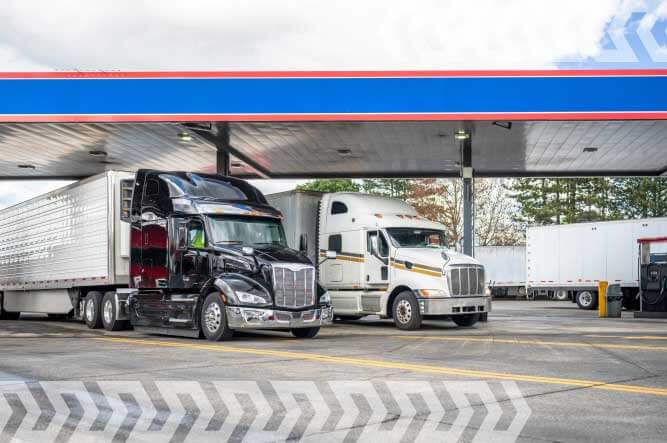Maximize Your Profit: Fuel Efficiency Tips for Carriers

Save big on your
biggest expense.
Save up to $2 a gallon on fuel with the Truckstop Fuel Card.
Fuel prices are on the rise, and with inflation showing no signs of easing, every gallon counts for carriers. With fuel being one, if not the largest, expense for drivers, optimizing fuel efficiency isn’t just about saving money—it’s about staying competitive. Recent insights and real-world experiences show that maintaining speeds between 56 and 62 mph can be the sweet spot for achieving the best fuel economy.
Why Fuel Efficiency Matters for Truck Drivers
Every mile you drive at an optimal speed translates into significant cost savings and less wear on your vehicle. Research and anecdotal evidence from drivers have consistently shown that driving at lower speeds—specifically within the 56 to 62 mph range—reduces fuel consumption dramatically. For instance, one trucker shared on Reddit that after slowing down to 62 mph, he achieved nearly 10 mpg on a long haul, compared to much lower fuel economy at higher speeds. Another driver mentioned that his fuel economy improved by 1-2 mpg just by reducing his speed.
It’s not just about the numbers, though. Slowing down also means less stress on your truck’s engine, fewer emissions, and a safer driving environment. Studies show that trucks traveling at high speeds, such as 75 mph, can use up to 27% more fuel compared to those cruising at 65 mph. These savings add up quickly, especially when fuel prices are climbing.
Top tips to boost fuel efficiency
- Maintain a steady speed.
Consistency is key. Using cruise control to maintain a constant speed in the 56-62 mph range helps prevent unnecessary acceleration and braking, both of which consume extra fuel. - Plan your route.
Thoughtful route planning can help you avoid traffic congestion and reduce idle time. Map out your journey to minimize stops and delays, ensuring you maintain that optimal cruising speed. - Minimize stops and idle time.
Every minute your engine is idling, you’re burning fuel and wasting money. If you expect to be stopped for more than a minute, consider turning off your engine. - Monitor your driving habits.
Small changes in behavior can lead to significant fuel savings. Avoid aggressive driving, and try to anticipate traffic flow to keep your speed steady. - Use technology.
Leverage the latest tools and apps designed to help drivers monitor and improve fuel efficiency. Many platforms offer real-time data and insights, so you know exactly where you can cut back on fuel usage.
Long-Term Benefits of Fuel-Saving Strategies in Trucking
Embracing fuel-efficient practices not only saves money in the short term but also extends the life of your engine and reduces overall maintenance costs. With every mile you drive more efficiently, you’re contributing to a safer environment and a more sustainable future for the industry. Plus, with better fuel economy, you might even qualify for fuel efficiency bonuses offered by some companies, further enhancing your bottom line.
Simplify fuel management with Fuel Desk.
In today’s economic climate, every drop of fuel saved is a step towards improved profitability. By maintaining speeds between 56 and 62 mph, planning routes carefully, and minimizing idle time, you can significantly reduce your fuel costs while also protecting your vehicle and the environment.
At Truckstop, we’re committed to giving you the tools and insights you need to thrive in an unpredictable market. Adopt these practices today, and watch your fuel savings translate into business growth and more money in your pocket.
Get helpful content delivered to your inbox.
Sign up today.
Find high-quality loads fast, get higher rates on every haul, and access tools that make your job easier at every turn.






